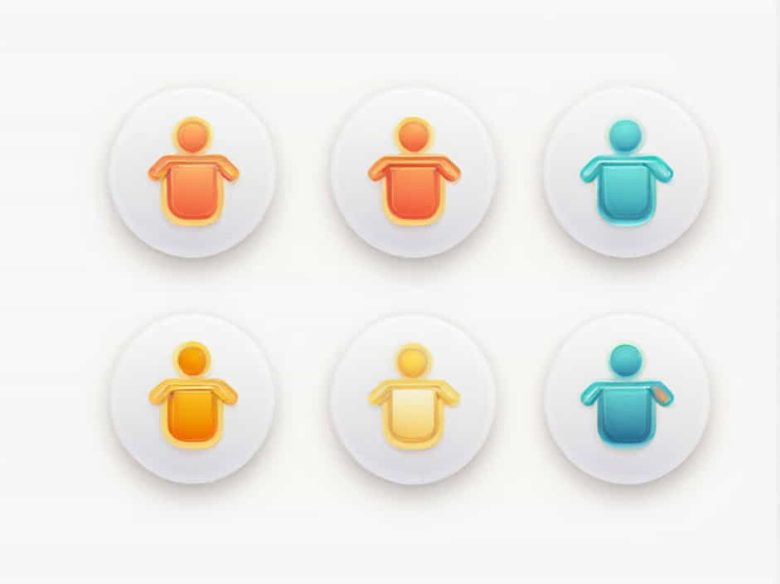The human body constantly works to maintain a stable internal environment a process known as homeostasis. This regulation ensures that essential factors like temperature pH levels and fluid balance remain within optimal ranges allowing cells and organs to function properly.
Homeostasis is vital for survival as even minor imbalances can lead to health issues. This topic explores the importance of homeostasis how it works and the key systems involved in maintaining balance.
What Is Homeostasis?
Homeostasis refers to the body’s ability to maintain relative stability despite external changes. It involves a complex system of feedback mechanisms that regulate bodily functions.
For example when body temperature rises the body sweats to cool down. When blood sugar levels drop the body releases stored glucose to restore balance.
The main goal of homeostasis is to keep conditions ideal for cellular activities ensuring overall health and well-being.
Key Factors Regulated by Homeostasis
1. Body Temperature
✔ The body maintains an average temperature of 37°C (98.6°F).
✔ When it’s too hot sweating and vasodilation (expansion of blood vessels) help cool the body.
✔ When it’s too cold shivering and vasoconstriction (narrowing of blood vessels) help retain heat.
2. Blood Sugar Levels
✔ The hormone insulin lowers blood sugar while glucagon raises it.
✔ After eating insulin helps store excess glucose.
✔ During fasting glucagon releases stored glucose to maintain energy levels.
3. pH Balance
✔ The body maintains a blood pH of 7.35 to 7.45.
✔ The lungs remove CO₂ preventing acidity.
✔ The kidneys regulate hydrogen and bicarbonate levels to maintain pH balance.
4. Fluid and Electrolyte Balance
✔ The body regulates water levels to prevent dehydration or overhydration.
✔ Electrolytes like sodium potassium and calcium are essential for nerve and muscle function.
✔ The kidneys filter excess water and electrolytes maintaining balance.
5. Blood Pressure
✔ The heart and blood vessels work to keep blood pressure within a normal range.
✔ If blood pressure is too low the body releases hormones to constrict blood vessels.
✔ If blood pressure is too high the vessels relax and expand to reduce pressure.
How Homeostasis Works: The Feedback System
The body maintains homeostasis through feedback mechanisms which are divided into two types:
1. Negative Feedback Mechanism
This is the most common way the body regulates balance. It works by reversing a change to bring the body back to normal.
Example: Temperature Regulation
✔ If body temperature rises the body cools down through sweating.
✔ If temperature drops the body generates heat through shivering.
2. Positive Feedback Mechanism
This amplifies a process rather than reversing it. It is used in special situations like childbirth and blood clotting.
Example: Childbirth
✔ The hormone oxytocin increases contractions until the baby is delivered.
✔ Once birth occurs the process stops naturally.
Homeostasis and the Body’s Major Systems
1. Nervous System
✔ The brain and nerves detect changes and send signals to respond.
✔ The hypothalamus is the body’s control center for temperature and hormone regulation.
2. Endocrine System
✔ Hormones released by glands help regulate blood sugar metabolism and stress responses.
✔ Examples: Insulin (pancreas) cortisol (adrenal glands) and thyroxine (thyroid gland).
3. Respiratory System
✔ The lungs regulate oxygen and CO₂ levels.
✔ Breathing rate changes based on oxygen demand and CO₂ levels.
4. Circulatory System
✔ The heart and blood vessels distribute oxygen nutrients and hormones.
✔ Adjusts blood pressure and temperature based on needs.
5. Urinary System
✔ The kidneys filter blood to maintain water electrolyte and pH balance.
✔ Excess fluids and waste are excreted as urine.
Why Is Homeostasis Important?
Without homeostasis the body cannot function properly. Some of the key reasons homeostasis is crucial include:
✔ Prevents dehydration and nutrient imbalances.
✔ Keeps organs functioning efficiently.
✔ Regulates energy levels for daily activities.
✔ Helps the body respond to stress and infections.
When homeostasis is disrupted it can lead to serious health issues.
Diseases Caused by Homeostasis Imbalance
1. Diabetes (Imbalance in Blood Sugar)
✔ Occurs when the body does not produce or respond to insulin properly.
✔ Leads to high blood sugar levels causing complications in the heart kidneys and nerves.
2. Hypertension (Imbalance in Blood Pressure)
✔ High blood pressure strains the heart and arteries increasing the risk of strokes and heart disease.
3. Hyperthermia & Hypothermia (Imbalance in Temperature)
✔ Hyperthermia (overheating) can cause heatstroke.
✔ Hypothermia (low body temperature) can lead to organ failure.
4. Acidosis & Alkalosis (Imbalance in pH)
✔ Acidosis (too much acid) can cause confusion fatigue and even coma.
✔ Alkalosis (too much base) affects muscle function and nerve signaling.
How to Support Homeostasis Naturally
You can help your body maintain homeostasis by following these healthy habits:
✔ Stay Hydrated – Drink enough water to support cellular functions.
✔ Eat a Balanced Diet – Consume foods rich in proteins vitamins and minerals.
✔ Exercise Regularly – Helps regulate blood pressure temperature and metabolism.
✔ Get Enough Sleep – Allows the body to repair and balance hormones.
✔ Manage Stress – Chronic stress disrupts hormonal balance.
Homeostasis is essential for survival allowing the body to adapt to internal and external changes. By regulating temperature blood sugar pH and fluid balance the body ensures optimal function.
Understanding how homeostasis works and taking steps to support it can improve overall health and longevity.



